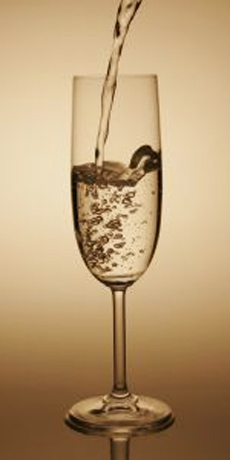TIP OF THE DAY: How To Pour Champagne
 The wrong way to pour Champagne or sparkling wine (photo by Diana Myrndorff | SXC). |
There’s science in everything, including pouring a glass of Champagne. According to a new study published in The Journal of Agricultural and Food Chemistry, Champagne is a drink best poured tilted—the opposite of how most people pour it, straight into a vertical glass. Pour Champagne as you would beer: gently down the side of a tilted glass. It preserves the concentration of bubbles, the reason we choose Champagne in the first place. According to the study, when Champagne (or by association, any sparkling wine) is poured into a vertically-held glass, it loses twice the amount of bubbles. (For those who think that pouring beer down the side of the glass is only to reduce the size of the head: It preserves the effervescence, too.) The head scientist on the project, Gérard Liger-Belair, is the author of the consumer book Uncorked, The Science Of Champagne. Professor Liger-Belair is on the faculty of the University of Reims, located in the Champagne region of France. Reims (pronounced RANCE) is the largest city in the Champagne region of France, an area where pouring a glass of Champagne is a common activity among residents. Now, they (and we) can do it scientifically. |
|
|
|
||